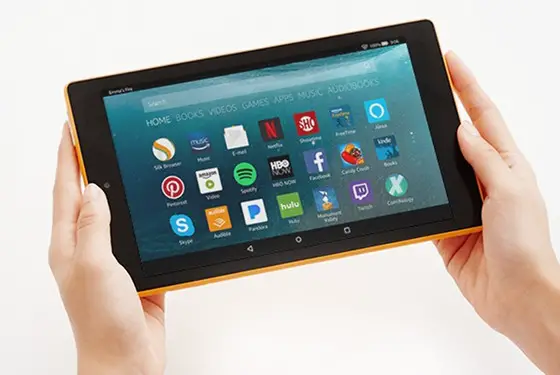In November 2012, Amazon released the first edition of Fire OS. Since then, further developed versions have hit the market, with 7.3.1.9 being released in November 2020. The advancement is an Amazon-developed operating system that powers many of the company’s products, including tablets and television. Upon creating their own software, the Washington-based company took inspiration from Android, which is an adaptation of the Linux kernel.
Because of Fire OS’s and Android’s aesthetic similarities, there’s an ever-growing perception that the Amazon system could compete over the coming years. Few can argue that the development isn’t becoming more diverse and user-friendly, so there’s scope for competition. With that, let’s see if Fire OS really can operate alongside Android in the digital era.
What is Fire OS?
By definition, Fire OS is the operating system for Amazon’s Fire TV and tablets. Regarding the core code, the Washing-based organisation mentions that Fire OS 7, which is the latest version, is based on Android 9. From a marketing standpoint, this serves Amazon well as it provides them with the foundations to compete. Because of their similarities, Amazon has opened its products up to the mobile market. This means that many Android-compatible Play Store apps are available from the Amazon site or through the Fire TV.
There can be no doubts that Android and Fire OS share numerous features. However, the pair aren’t merely mirroring each other. At their core, Amazon products run Android code but not fully-supported versions of the popular operating system, meaning that Fire OS doesn’t feature any of Google’s apps or services. As a result, Amazon doesn’t use the Play Store and must instead operate with the default Amazon Appstore.
However, it is possible to add Google apps and services to your Fire OS tablet. Those wanting the complete Android experience can install Play Store from their fire tablet and then download the APK files. Alternatively, you can also install the system from a PC and then run the necessary scripts. Although Android and Fire OS are separate entities, Amazon has made it possible to intertwine both systems. While the company’s Fire TV uses Fire OS, their Amazon Fire TV Stick allows consumers to stream videos from Android smartphones or tablets. With the LocalCast app, users can cast almost anything from a supporting device.
Still In Android’s Shadow, but for How Much Longer?
On the face of it, Fire OS is lagging behind Android. However, that may not be the case for much longer. Android established itself as a market-leading operating system by adopting an entertainment-driven approach to product diversity and compatibility. Now, this is something that Amazon is striving to mirror. Aside from the Linux kernel-inspired development’s ventures into the smartphone and tablet sectors, Android has also been at the forefront of other entertainment markets.
The Android systems power a host of mobile game consoles, including the Emulation III, Nvidia Shield, and PowKiddy X18. However, the advancement has recently branched out into other entertainment streams. The Nikon Coolpix S810c digital camera can record full HD movies at 1080p and 30 FPS, and it runs Android OS 4.2.2 Jelly Bean. The product features built-in WiFi, meaning that the Android compatibility enables users to add Google Play apps to their Coolpix S810c. In light of Android’s diverse approach to expansion, Amazon has followed in its footsteps with Fire OS. Along with being integral to Fire TV, the advancement is also at the heart of the company’s Echo smart speakers. The Echo speakers come with Amazon Alexa, which allows users to request daily news and stream music.
Amazon also mirrors Android in adopting a fruitful entertainment library approach. Within the modern era, this works well because it enables developers to explore various sectors within one device. The company’s Fire Tablets allow consumers to immerse themselves in an array of different entertainment markets, including eBooks, as the tablet utilises Amazon’s Kindle services. Not only that, but the Fire Tablet range is also compatible with various streaming services, such as Amazon and Netflix, thus allowing users to enjoy the latest television and cinematic productions through the Fire OS-powered product.
Moreover, Amazon’s tablets provide a route to the online casino industry, with bettors able to explore the ever-growing library of slot titles through the Fire Tablet-compatible app. The app is available on the Amazon website, and there are over 450 different titles to play, including Untamed Giant Panda. By embracing an entertainment library approach and covering numerous sectors, it highlights that Fire OS is a genuine competitor to Android.
What Does the Future Hold?
Like iOS, Android has been one of the leading operating systems for more than a decade. While it’s unlikely that Fire OS will emerge and leave the Linux kernel-inspired development behind, it’s tricky to deny that the Amazon advancement isn’t here to stay. In branching out into various entertainment markets, Fire OS has laid the foundations to build a long-term future. Although there are no guarantees that it will mirror Android’s unquestionable longevity, the competition will bring the best out of both brands, which is a good thing for consumers.







